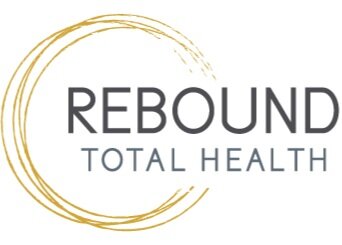
Attention Deficit Hyperactive Disorder
Do you or your child have difficulty paying attention, focusing on tasks, or completing things before a deadline? Or, do you have difficulty feeling motivated to complete things, even things you want to do? Do you sometimes feel overwhelmed by big emotions and wonder why you can’t seem to control them better, like others do? Have you ever been called lazy, bad, hyper, or just “too much”?
These experiences are all common in people with ADHD, a neurodevelopmental disorder affecting millions of children and adults across North America.
What is ADHD?
Attention Deficit Hyperactive Disorder, or ADHD, is a neurodevelopmental disorder, which simply means that it affects the brain’s structure and chemistry. Your brain works differently from others, affecting your attention, self-control, ability to sit still for long periods of time, and executive function–which refers to your brain’s ability to prioritize and manage thoughts and actions.
If you have ADHD, you are also more likely to experience the following:
Anxiety
Depression
Low Self Esteem
Unhealthy Coping
Relational Conflict
Conduct Disorder
Oppositional Defiant Disorder (ODD)
Bipolar Disorder
Sleep Disorders
Not sure if it’s ADHD?
Click the button below to download our free guide.
There are three types/presentations of ADHD:
Predominantly Inattentive Presentation
You may experience difficulties with organizing or finishing tasks, paying attention to details, or following instructions and conversations. You are likely easily distracted and may forget the details of daily routines.
Combined Presentation:
You demonstrate symptoms from both of the above two categories equally.
Predominantly Hyperactive-Impulsive Presentation:
You may fidget a lot and have difficulty sitting still for long periods of time. You may feel restless and be overall quite impulsive, often interrupting others, grabbing things, or speaking at inappropriate times. You may be more prone to accidents, injuries, and risky behaviors.
ADHD In Adults
We often think of ADHD as a childhood disorder, bringing to mind images of hyperactive, disruptive children. However, ADHD continues throughout a person’s life, and individuals whose ADHD went undiagnosed in childhood can still be diagnosed in adulthood.
Adults with ADHD are often treated using a combination of:
Medication, which helps the brain slow down, pay attention, and control impulses
Therapy, often cognitive behavioral therapy (CBT)
Skills training, on topics such as time management and self control
The Benefits of ADHD
Now, we often think about the negatives of ADHD, but ADHD also has benefits! People with ADHD are often spontaneous, resilient, creative, and energetic. When they find a topic or task that interests them, they can be hyper focused and dedicated, working hard to get things done.
An ADHD diagnosis can feel very overwhelming and scary for parents, children, and adults alike, but support is available!
Symptoms of ADHD in Adults
1. Difficulty Remembering Things
2. Difficulty with organization
3. Difficulty following directions
4. Procrastination
5. Difficulty with emotional regulation
6. Difficulty maintaining relationships
7. Low Self Esteem
8. Mood Swings
9. Impulsivity
10. Unhealthy Coping behaviours
11. Low motivation
ADHD In Children
ADHD symptoms often show up between the ages of 3 and 12, as children start to show Inattentive, hyperactive, or combined symptoms.
Symptoms of ADHD in Children
Understanding more about ADHD in Children
Now, many of these behaviors are fairly common in childhood. However, if your child has ADHD, they will show these behaviors consistently over time and across all areas of their life (at school, home, and in friendships).
Children diagnosed with ADHD often benefit from a combination of medication–to help their brains focus better and regulate their emotions–and therapy–often behavioral therapy, but also play therapy and practical skills training. Together, these approaches help your child cope better with their ADHD and manage their responsibilities better.
trouble focusing on activities
becoming easily distracted
low attention span while playing or doing school work
fidgeting, squirming, or otherwise having trouble sitting still
constantly needing movement or frequently running around
engaging in activities loudly or disruptively
excess talking and interrupting other people
What are some strategies to help support my relationship?
Dump List
As you probably know, an ADHD mind is filled with endless to-do’s and thoughts. Unfortunately, we can’t always trust ourselves to remember or correctly organize and categorize the thoughts. We recommend a dump list - a physical list (either on paper or in your phone) where all your ‘to do’s’ and random ideas go. You can trust this dump list to safely store those thoughts and bring them back to your memory, better than your own brain can! You’ll be able to review your dump list to create your hierarchy of to-do’s for each day!
Entering with Intention
Often times, folks with ADHD can easily get distracted when trying to execute a task. When entering a room to complete a task, enter with an intention and make that intention known out loud. What does this look like?
“ I’m going to the kitchen to clean the dishes.”
“I’m going to the bedroom to change my shorts”
Don’t just THINK these thoughts, say them out loud to help your mind focus on the intention at hand, to increase the likelihood of executing the task.
ADHD on the Bounce Back Blog
-

ADHD: Not just for Kids
-

Accessing some Affirmations
-

Exploring our Expectations
Ready to get support for ADHD?
Extra ADHD Resources
If you want to learn more about ADHD, check out these articles or resources to learn more!




